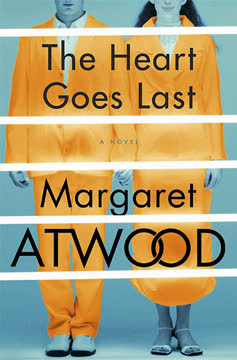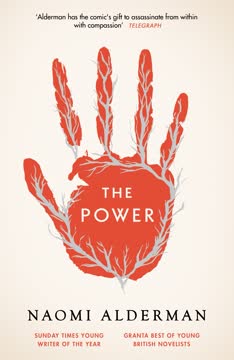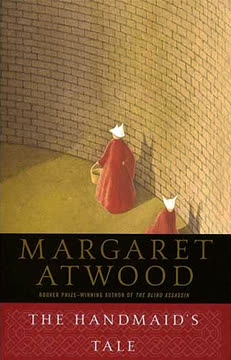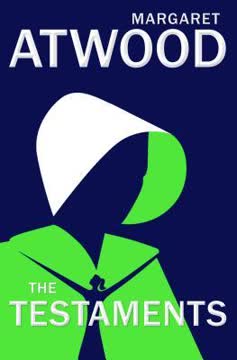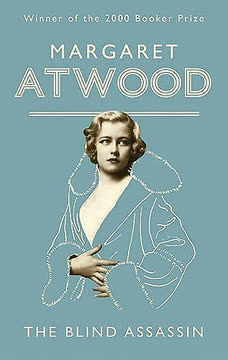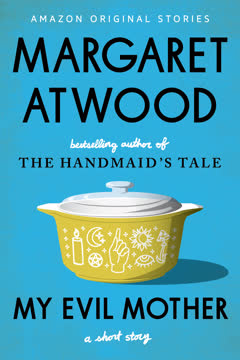Plot Summary
Car Dreams, Nightmares
Stan and Charmaine, once a hopeful married couple, now live in their car, clinging to each other as society crumbles around them. Their days are filled with fear, hunger, and the constant threat of violence. The memory of their lost home and former lives haunts them, and their love is strained by desperation. Charmaine tries to stay optimistic, but Stan's bitterness grows. Their relationship is tested by the grinding reality of poverty, and the world outside offers only danger and uncertainty. The car becomes both their prison and their fragile sanctuary, a symbol of everything they've lost and the hope they can't quite let go.
The Positron Promise
When the Positron Project in Consilience appears on TV, it promises security, employment, and a home—if they agree to alternate months as prisoners and civilians. The offer is irresistible compared to their current misery. Charmaine is enchanted by the vision of clean sheets and safety, while Stan is skeptical but desperate. They apply, pass the selection process, and are swept into a world of order and comfort. The town's fifties aesthetic and strict routines seem almost utopian, but beneath the surface, rules and surveillance hint at something darker. Their relief is palpable, but the cost of belonging is not yet clear.
Double Lives, Double Lies
Life in Consilience is a carefully orchestrated dance: one month as a civilian, one as a prisoner. Stan and Charmaine settle into their new home, sharing it with unseen "Alternates" who occupy it during their prison months. The system is efficient, but intimacy is replaced by routine. The couple's connection frays as they adapt to their double lives. Charmaine finds purpose in her work, while Stan grows restless and suspicious. The enforced separations and the presence of the Alternates create a sense of unease, as if their lives are being scripted by unseen hands. The promise of safety comes with a price: the erosion of trust and self.
Alternates and Affairs
Charmaine discovers a note left by Jasmine, the female Alternate, to Max, the male Alternate, filled with longing and passion. The note awakens something in Stan, who becomes obsessed with the idea of Jasmine. Meanwhile, Charmaine and Max begin a secret affair, meeting in abandoned houses during switchover days. Their encounters are raw and reckless, a stark contrast to her marriage. The affair is intoxicating but dangerous, threatening to unravel everything. Both Stan and Charmaine are drawn into fantasies and betrayals, their hearts pulled in directions they can't control. The boundaries between love, lust, and loyalty blur.
The Heart's Betrayal
The affair between Charmaine and Max deepens, while Stan's obsession with Jasmine grows. Charmaine's guilt mounts, but she can't resist the pull of forbidden passion. Stan, sensing something is wrong, becomes increasingly paranoid and desperate to uncover the truth. Surveillance tightens, and the risk of exposure looms. The emotional distance between husband and wife widens, each trapped in their own web of lies and longing. The heart, once a source of comfort, becomes a source of pain and danger. The illusion of safety in Consilience is shattered by the reality of human desire and weakness.
Prisoners and Prison Keepers
Inside Positron Prison, Stan and Charmaine experience the system's true nature. Stan is assigned to poultry supervision, witnessing the strange rituals and suppressed violence among inmates. Charmaine, promoted to Chief Medications Administrator, is tasked with the "Special Procedure"—a euphemism for euthanizing incorrigible prisoners. She performs her duties with a mix of compassion and numbness, haunted by the moral cost. The line between prisoner and keeper blurs, as everyone is both captive and captor in turn. The system's efficiency masks its cruelty, and complicity becomes a survival strategy. The heart's last defense is eroded by routine and necessity.
Forbidden Notes, Secret Desires
Stan finds evidence of Charmaine's affair and is consumed by jealousy and rage. He sets out to uncover Jasmine's identity, hacking into the town's surveillance system and tracking Charmaine's movements. The tension between them escalates, leading to confrontations and threats. Charmaine, fearing exposure and violence, contemplates desperate measures to protect herself. The web of secrets tightens, and the risk of catastrophic consequences grows. The surveillance state amplifies their paranoia, turning love into a battleground. The heart's secrets, once private, are now subject to the cold gaze of authority and technology.
Surveillance and Seduction
Jocelyn, a high-ranking surveillance officer and Max's wife, discovers the affair and uses her power to manipulate both Stan and Charmaine. She blackmails Stan into sexual submission, forcing him to reenact scenes from the affair for her own gratification. Charmaine is isolated and demoted, her reputation tarnished by rumors and administrative "errors." The couple is trapped by Jocelyn's control, their autonomy stripped away. The surveillance apparatus is revealed as both omnipresent and deeply personal, capable of exploiting the most intimate vulnerabilities. Seduction becomes a weapon, and privacy a distant memory.
The Procedure's Price
Charmaine is ordered to perform the Special Procedure on a prisoner—only to discover it is Stan, drugged and restrained. Believing she must kill him or be killed herself, she administers the injection, convinced she has murdered her husband. In reality, it is a ruse orchestrated by Jocelyn and her allies to fake Stan's death and smuggle him out. Charmaine is left shattered by guilt and grief, while Stan awakens in a warehouse, alive but erased from the system. The price of survival is the destruction of trust and the burden of unbearable secrets. The heart's last act is both sacrifice and betrayal.
Revolt and Revelation
Jocelyn and her network orchestrate a plan to expose the crimes of Consilience and Positron. Stan, disguised and smuggled out, delivers evidence to a journalist, triggering a media firestorm. The truth about organ harvesting, brainwashing, and the exploitation of prisoners is revealed. The system collapses under public outrage, and those in power are brought down. Charmaine, still believing Stan is dead, is recruited to spy on Ed, the project's architect, as he plans to use new brainwashing technology for personal gain. The revolt is both external and internal, as characters struggle to reclaim their agency and humanity.
Escape Plans, Identity Games
As Consilience unravels, Stan and Charmaine are reunited, but not before both undergo profound transformations. Charmaine is nearly subjected to a brainwashing procedure that would erase her love for Stan and bind her to Ed. Jocelyn intervenes, ensuring Charmaine's freedom and Ed's downfall. Stan, having played multiple roles—husband, prisoner, spy, Elvis impersonator—emerges changed but determined to reclaim his life. The escape from Consilience is both literal and metaphorical, as they shed the identities imposed on them and confront the possibility of genuine choice. The heart, battered but resilient, seeks a new beginning.
Love Rewired, Love Restored
In the aftermath, Stan and Charmaine struggle to rebuild their relationship. Both are haunted by the past—Charmaine by guilt, Stan by betrayal and loss. They undergo a "restorative" brain procedure, but Jocelyn reveals to Charmaine that it was a placebo: her renewed love for Stan is her own, not the result of manipulation. The couple finds solace in each other, choosing to forgive and move forward. Their love, once fractured by lies and desire, is now tempered by experience and understanding. The heart, having gone last, endures.
The End of Consilience
The exposure of Consilience's crimes leads to its dissolution. The town's utopian façade crumbles, and its leaders are exiled or imprisoned. Survivors grapple with the trauma of their experiences, seeking justice and closure. Some, like Jocelyn and Conor, find new purpose in dismantling systems of control; others, like Aurora and Max, pursue happiness in unexpected ways. The legacy of Consilience is ambiguous: a warning against the dangers of engineered happiness and the cost of security. The heart's journey is mirrored in the fate of the community—a cycle of hope, corruption, and renewal.
New Beginnings, Old Shadows
Stan and Charmaine start anew in Las Vegas, raising a child and building a life together. The scars of the past linger, but they are determined to choose love and freedom each day. Jocelyn visits, offering Charmaine a final revelation: her love for Stan was never artificially induced. The possibility of choice, and the burden of responsibility, remain. The heart's last lesson is that happiness cannot be engineered or guaranteed—it must be chosen, again and again, in the face of uncertainty. The story ends with hope, but also with the awareness that old shadows may always return.
Characters
Stan
Stan is a once-hopeful, practical man whose life is upended by economic collapse. His marriage to Charmaine is both his anchor and his torment, as poverty and humiliation erode his self-worth. In Consilience, he oscillates between gratitude for safety and suspicion of the system's control. Stan's psychological journey is marked by jealousy, obsession, and a desperate need for agency. His fixation on the mysterious Jasmine and his eventual role as a pawn in larger conspiracies reveal his vulnerability to both desire and manipulation. Ultimately, Stan's arc is one of survival, self-discovery, and the painful reclamation of love and trust.
Charmaine
Charmaine is outwardly cheerful, determined to see the bright side even as her world collapses. Her need for safety and order is rooted in childhood trauma and loss. In Consilience, she thrives on routine and the illusion of control, but her longing for passion leads her into a dangerous affair with Max. Charmaine's psychological complexity is revealed in her capacity for both compassion and self-deception. Her role as Chief Medications Administrator forces her to confront the moral cost of survival. Charmaine's journey is one of guilt, resilience, and the struggle to reconcile love, duty, and desire. Her ultimate choice—to love Stan freely—embodies the novel's central question about agency and authenticity.
Jocelyn
Jocelyn is a high-ranking official in Consilience's surveillance apparatus and the wife of Max/Phil. She is both victim and perpetrator, using her power to manipulate Stan and Charmaine for personal and political ends. Jocelyn's psychological profile is marked by control, intelligence, and a capacity for both cruelty and unexpected kindness. Her own marriage is a battleground of infidelity and revenge. Ultimately, Jocelyn becomes a catalyst for rebellion, orchestrating the exposure of Consilience's crimes and offering Charmaine the possibility of true freedom. She embodies the ambiguous morality of those who survive by mastering the system.
Max/Phil
Max, also known as Phil, is Charmaine's Alternate and Jocelyn's husband. He is seductive, reckless, and emotionally unavailable, drawing Charmaine into a passionate but destructive affair. Max's duplicity and addiction to risk make him both irresistible and dangerous. His relationship with Jocelyn is a game of mutual manipulation, while his connection to Charmaine is marked by intensity and betrayal. Max's ultimate fate—reprogrammed to love Aurora—serves as a commentary on the limits of desire and the dangers of engineered happiness.
Ed
Ed is the architect of the Positron Project, a man driven by ambition and a belief in engineered utopia. His charisma masks a ruthless pragmatism and a willingness to sacrifice individuals for the "greater good." Ed's psychological complexity lies in his ability to rationalize cruelty as necessity. His obsession with Charmaine and his embrace of brainwashing technology reveal his descent into megalomania. Ed's downfall is both personal and systemic, as the system he built turns against him.
Aurora
Aurora is a Human Resources officer in Consilience, marked by a traumatic past and a reconstructed face. She is both a functionary of the system and a victim of it, seeking validation and connection. Aurora's alliance with Jocelyn and her eventual reprogramming to love Max/Phil reflect her longing for acceptance and the dangers of surrendering agency. Her character highlights the ways in which trauma and loneliness can be exploited by systems of control.
Conor
Conor is Stan's estranged, criminally-inclined brother, a survivor who thrives on chaos and manipulation. He represents the world outside Consilience—a world of scams, violence, and opportunism. Conor's relationship with Stan is fraught with rivalry, resentment, and a grudging loyalty. He becomes an unexpected ally in the rebellion against Consilience, embodying the unpredictable forces that disrupt systems of control.
Veronica
Veronica is a former friend of Charmaine's and a victim of Positron's brainwashing experiments. Intended to be imprinted on a human, she instead falls in love with a blue teddy bear. Veronica's story is both tragic and comic, highlighting the absurdity and horror of attempts to engineer desire. Her resilience and self-awareness make her a symbol of unintended consequences and the persistence of individuality.
Sandi
Sandi is Charmaine's former coworker, a sex worker who navigates the dangers of Consilience with wit and pragmatism. Her near-destruction at the hands of the system and her eventual escape underscore the vulnerability of those on society's margins. Sandi's friendship with Charmaine is a source of both comfort and warning, illustrating the precariousness of safety in a world built on exclusion.
Lucinda Quant
Lucinda is a journalist whose determination to expose Consilience's crimes triggers the system's collapse. Her resilience, humor, and willingness to risk everything for the truth make her a beacon of hope. Lucinda's role as the "messenger" underscores the power of information and the importance of bearing witness in the face of oppression.
Plot Devices
Alternating Lives Structure
The novel's central device is the alternating-month system: residents of Consilience live as civilians for one month and as prisoners the next, sharing homes with unseen Alternates. This structure creates a sense of dislocation, surveillance, and enforced intimacy, mirroring the characters' psychological fragmentation. The device allows Atwood to explore themes of identity, complicity, and the permeability of boundaries between freedom and captivity. The strict routines and role reversals serve as both a metaphor for societal control and a mechanism for personal betrayal.
Surveillance and Blackmail
Surveillance is omnipresent in Consilience, enabling those in power to exploit secrets and desires. Jocelyn's use of surveillance footage to blackmail Stan and Charmaine exemplifies the personal and political uses of observation. The device heightens paranoia, erodes trust, and transforms private longing into public vulnerability. It also serves as a tool for rebellion, as characters use surveillance against the system.
The Special Procedure
The "Special Procedure"—the euphemistic term for state-sanctioned euthanasia—serves as both a plot engine and a symbol of the system's moral bankruptcy. Charmaine's role as executioner forces her to confront the cost of survival and the limits of compassion. The device is used to test loyalty, enforce obedience, and ultimately to fake Stan's death, enabling his escape. It embodies the novel's exploration of complicity, guilt, and the price of safety.
Affair and Alternate Identities
The secret affair between Charmaine and Max, and Stan's obsession with Jasmine, drive the plot's emotional and psychological tension. The use of Alternates—unseen but ever-present—creates a sense of doubling and displacement. The affair is both a symptom and a cause of the couple's unraveling, illustrating the dangers of suppressed desire and the impossibility of perfect control.
Brainwashing and Rewiring Love
The novel's climax centers on the use of brainwashing technology to erase and reprogram love. The threat of having one's desires and attachments engineered by others raises questions about agency, authenticity, and the meaning of happiness. The device is used both as a tool of oppression and, ironically, as a means of liberation, as Charmaine's love for Stan is revealed to be her own choice.
Satirical Utopia/Dystopia
Atwood's use of a retro-futuristic, fifties-inspired utopia allows her to satirize both nostalgia and the dangers of social engineering. The town's cheerful façade masks exploitation, violence, and the erasure of individuality. The device of the "perfect" community becomes a lens for examining the costs of security, the allure of conformity, and the resilience of the human heart.
Analysis
Margaret Atwood's The Heart Goes Last is a darkly comic, deeply unsettling exploration of love, freedom, and the human cost of engineered utopia. Through the lens of a near-future society ravaged by economic collapse, Atwood interrogates the seductive promises of safety, order, and happiness—revealing how easily they can become tools of control and dehumanization. The alternating-lives structure, with its enforced intimacy and surveillance, exposes the fragility of trust and the dangers of complicity. Atwood's characters are both victims and perpetrators, navigating a world where desire is both weapon and weakness. The novel's central question—can love survive in a world designed to eliminate risk and pain?—is answered with both irony and hope. Atwood suggests that true freedom lies not in the absence of suffering, but in the messy, unpredictable choices of the heart. The story's final twist—that love cannot be engineered, only chosen—serves as both warning and consolation. In a world obsessed with control, The Heart Goes Last reminds us that the heart's last act is always its own.
Last updated:
Review Summary
The Heart Goes Last receives mixed reviews. Some praise Atwood's sharp social satire, dark humor, and dystopian vision, while others find it disappointing and absurd. The novel explores themes of economic collapse, social control, and human nature through the story of a couple who join a community that alternates between prison and suburban life. Critics note the book's commentary on consumerism, sexuality, and freedom versus security. Many reviewers felt the plot became increasingly bizarre and lacked the depth of Atwood's previous works.
Download PDF
Download EPUB
.epub digital book format is ideal for reading ebooks on phones, tablets, and e-readers.
